How To Make Sauerkraut
As an Amazon Associate I earn from qualifying purchases.
Follow my easy step-step guide to learn how to make sauerkraut at home with just 2 ingredients. I cannot get enough of this tangy cabbage condiment.
In this post you’ll learn:
- How to make sauerkraut at home with no special equipment and only two ingredients.
- The health benefits of sauerkraut.
- The best equipment to get if you want to make larger quantities.
I love sauerkraut. It is one of my favorite things in the world and the better the sauerkraut, the more I love it. I’ll eat canned kraut from a store (Aldi brand is the absolute best as far as canned goes) but the cold bagged kind in the deli (such as Boar’s Head brand) is much better than canned.
However, homemade sauerkraut absolutely wins out over any and all sauerkraut that you could ever find on a grocery store shelf. Truly. It is night and day in terms of quality and flavor. So if you love sauerkraut as much as I do, today I am going to show you one of the most simplified ways of making it, with some tips and tricks at the end in case you want to go pro.
All you need is shredded cabbage, kosher salt, and a little bit of patience to make my . Let’s get into it and learn how to make sauerkraut a home!
Recipe Ingredients
- Cabbage
- Salt
How to Make Sauerkraut
Dump your fresh cabbage and salt into a large bowl.
Now you want to take your hands and squeeze and mix all of this together, bruising the cabbage as much as you can to help draw out the juices.
The salt will help a lot with this as well. I am using gloves on my hands but you don’t have to, just make sure your hands are really clean.
This is what it looks like after I’ve squeezed and mixed it up for a few minutes with my hands.
Now cover that and let it sit for about 10 minutes.
During that time the salt will draw a lot more liquid out of the cabbage. This is creating our brine in which the cabbage is going to ferment.
After 10 minutes you can see that it has lost even more volume.
It is always amazing how you can start with what you think is a large quantity of cabbage and be doing good to end up with a mason jar of sauerkraut.
Using a jar funnel, pack the cabbage down into a mason jar (I am using a large mouth quart jar).
Pack it as tight as you can, trying to get the cabbage submerged in the salt water it has wept.
Let that sit for the rest of the day.
You should end up with enough liquid to cover your cabbage, as you can see in this photo. If by the next day you still don’t have enough, you can add a little bit of water to make up the difference.
Leave your sitting out on your countertop or in a cool place (between 65 and 72 degrees is best if possible) and let it for 1 to 3 weeks.
The importance of venting the sauerkraut
Now you need to know that a LOT of gas is going to build up during this . During the first week, I open the lid each morning and each evening and then put it back on to allow the gas to escape. After that week I do it about once a day.
Over time your sauerkraut will begin to develop its taste, which only gets better the more time goes on. I generally put mine in the fridge and start eating it after 2 weeks but you can leave it out another week if you like or put it in the fridge in as little as 3 to 4 days if you want a very mild taste, which is absolutely not my preference. I like a deeper, richer, more fermented cabbage that tends to show up around the 2-week mark.
Storage
Store your sauerkraut in the fridge for several months (we’re talking 6 months, although I doubt it will last that long).
Recipe Notes
- I like to use kosher or sea salt but you can also use Himalayan salt. Just don’t use iodized salt because the iodine has been known to inhibit fermenting.
- Try to keep your cabbage pushed down beneath the salt water level. They sell weights on Amazon for this (click here to see them) but I have never used them. You can also use a regular mouth 4-ounce jelly jar to help weigh the cabbage down or even a zipper seal bag sealed shut with water inside, but again, I’ve never had a need myself. I just push it down once a day, with a clean wooden spoon, during the . I’m perhaps overly cautious not to touch it with my bare hands as I don’t want to disturb all of the happy bacteria that are being born.
- For added flavor, you can add a couple of tablespoons of shredded fresh ginger and minced garlic cloves to the kraut. Other dried herbs and spices to add include 1 tablespoon each of caraway seed, dill seed, and/or mustard seed.
- You can also add 2 to 3 grated carrots to this fermented sauerkraut recipe.
Recipe FAQs
What are the health benefits of sauerkraut?
There are a LOT of health benefits to eating sauerkraut and other fermented food. Specifically, sauerkraut is high in fiber, vitamins C, A, K, and B. It’s also a good source of iron, copper, magnesium, calcium, and manganese.
Sauerkraut also contains a lot of great living and highly concentrated probiotics which serve countless purposes in your digestive system.
What’s the best salt to cabbage ratio for sauerkraut?
Generally, you want a heaping tablespoon of salt per 2 pounds of cabbage. If you are thinking it will taste salty, it really doesn’t. It will be the first few days but it isn’t sauerkraut yet at that point. The more it ages the less salty it becomes and a whole other flavor of wonderful develops in its place.
However, if you end up with it too salty for your taste once it is done, the preferable method of dealing with that is to add a little additional water to the brine rather than pouring the brine out because so much goodness is in that.
What happens if I forget to vent my homemade sauerkraut?
If you forget to vent for a day or two, the best thing to do is place your jar in a plastic grocery bag, close the bag up around it a bit, then open the lid. There will likely be some spewing as the gases escape but the bag will catch it all. Once the jar is open, close it again and rinse it off. No biggie.
I should let you know that they sell these little airlock things (look up on Amazon), which fit on mason jars to help vent the gases but I’ve never had the need because I only do small batches in mason jars and it is no trouble to vent the jar once or twice a day.
What is a fermenting pot?
If you want to get into fermenting larger quantities of sauerkraut and other veggies (check out my homemade kimchi recipe here), you might want to invest in a fermenting pot. You can find them on Amazon, along with the weights mentioned above.
My fermenting pot has a special well around the top that you can pour water in to seal the pot, but still allow gases to escape as they are formed so there is no need to vent the pot each day as we do with mason jars. This helps protect against spoilage as well and allows you to leave your fermenting alone for the most part until it is ready, as long as you check the water level on your seal from time to time.
What’s the main ingredient in sauerkraut?
The main ingredient is shredded green cabbage. However, for something different you can use red cabbage or napa cabbage instead.
Can I freeze sauerkraut?
You can freeze sauerkraut but I don’t recommend it, as it kills all those probiotics and beneficial bacteria you’ve worked to create. Luckily, it will last for months in the fridge, so there’s no need for freezing.
How do you serve sauerkraut?
Sauerkraut is a great topping to add to salad, burgers, wraps, hot dogs, or sandwiches. Add it to a classic Reuben sandwich, hot dog chili, meatloaf burgers (with burger slaw), or potato salad.
Check out these other pickles and relishes:
Chow Chow Recipe (Southern Relish)
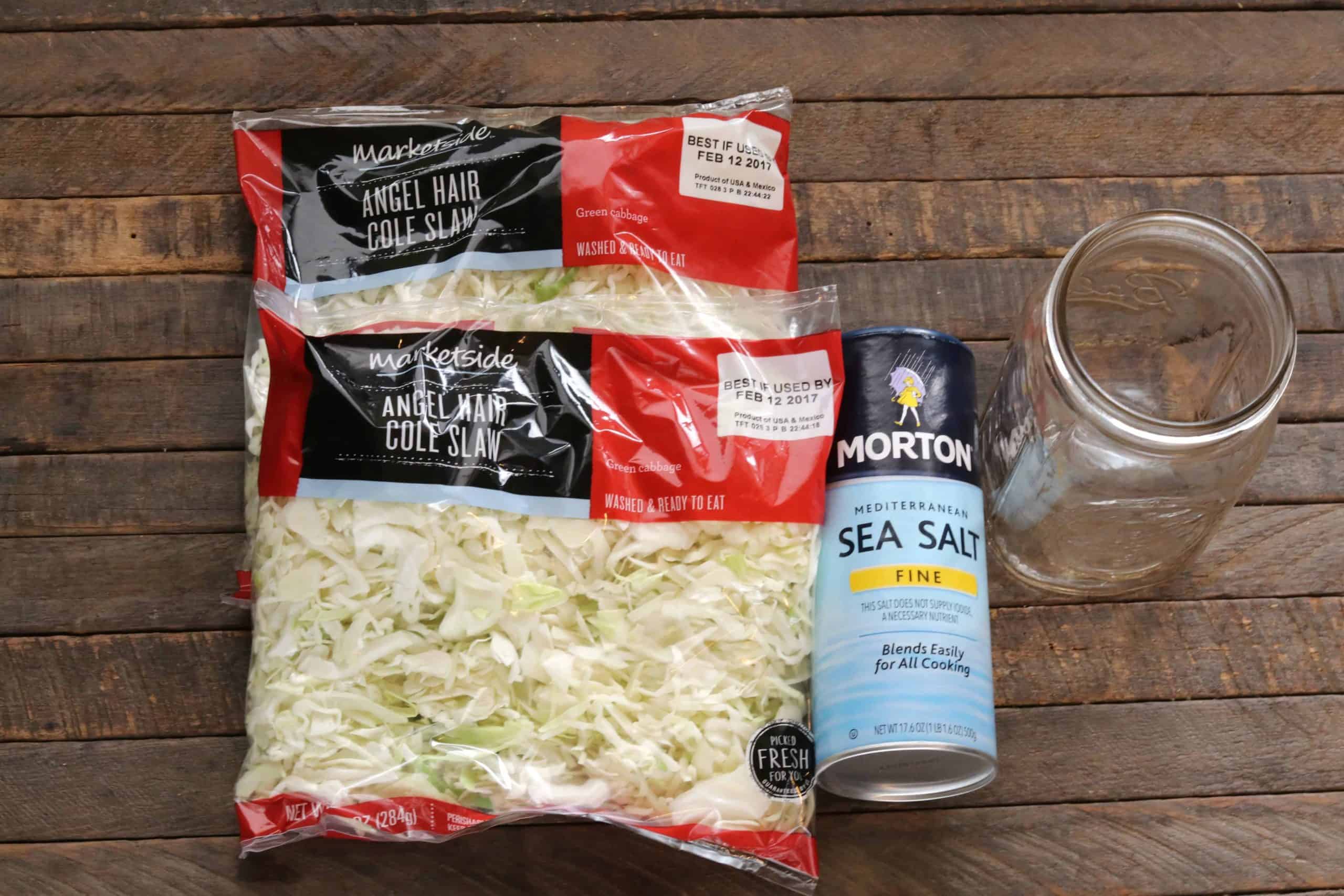
Ingredients
- 1.5-2 pounds shredded cabbage
- 1 tablespoon kosher salt
Instructions
- Place shredded cabbage in a large bowl. Sprinkle salt over. With very clean hands (or using gloves) squeeze and mix cabbage and salt for several minutes, until it decreases in volume and starts producing juices.1.5-2 pounds shredded cabbage, 1 tablespoon kosher salt
- Cover and let it sit for 10 minutes.
- Pack the cabbage into a mason jar, pressing down as much as possible. Cover and let it sit for a day.
- Check to see if there is enough liquid to cover the cabbage. If so, open the lid and press down until the cabbage is submerged. If not, add a little more water so that there is enough to cover. Press cabbage down to submerge. Cover with lid once more.
- For the next week, open the lid in the morning and evening to release pressure and then immediately close it again. After the first week, once per day should be enough.
- You can begin testing the flavor of the sauerkraut after one week. Once it reaches your desired depth of flavor it is ready to place in the refrigerator and start eating. Store in the refrigerator for several months. I prefer to leave mine out for two weeks before refrigerating.
Nutrition

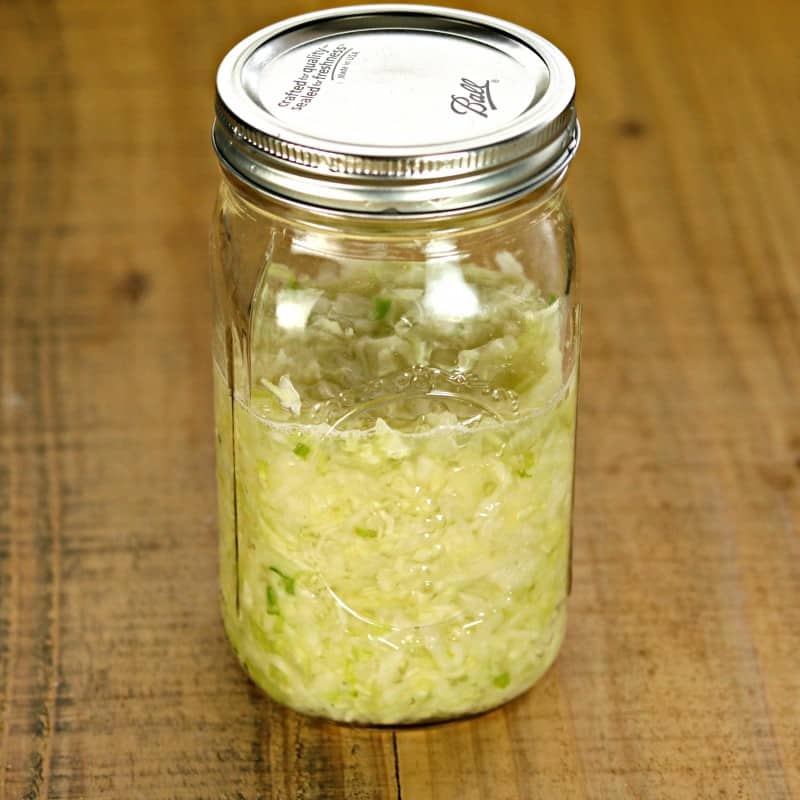
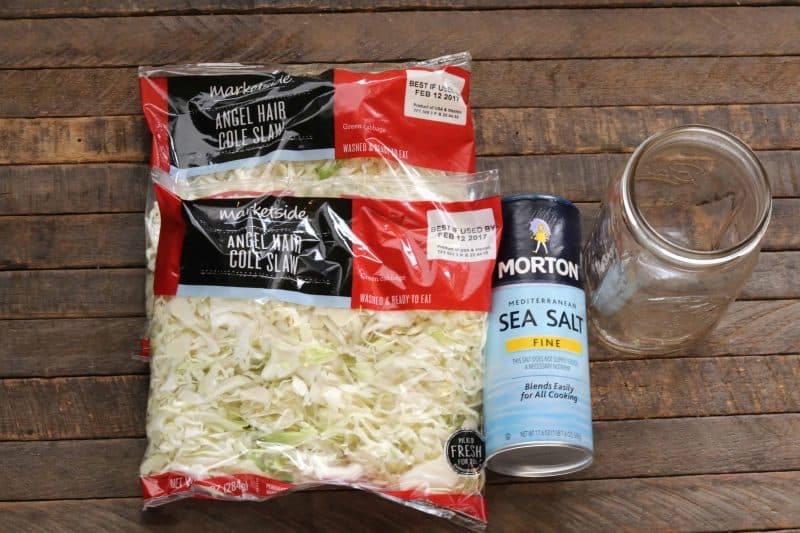
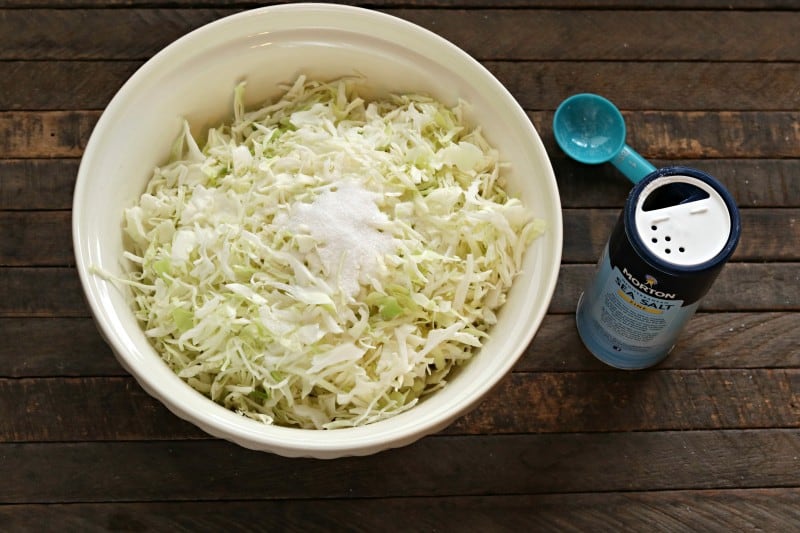
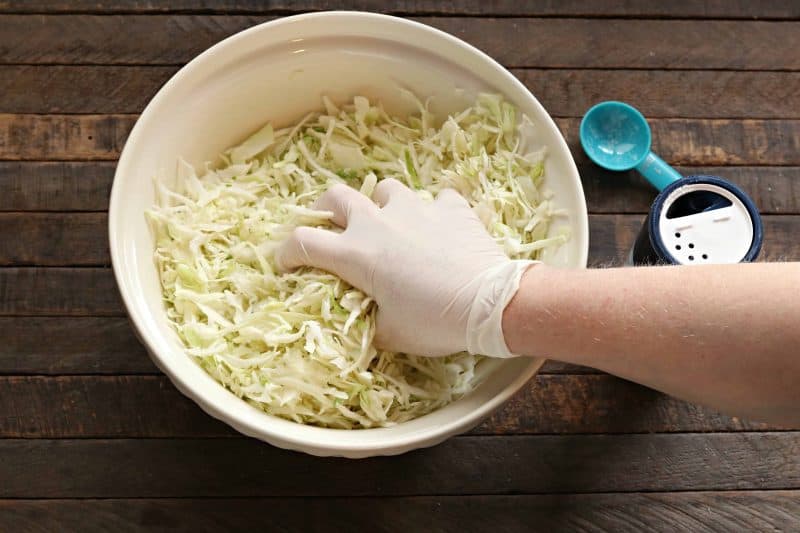
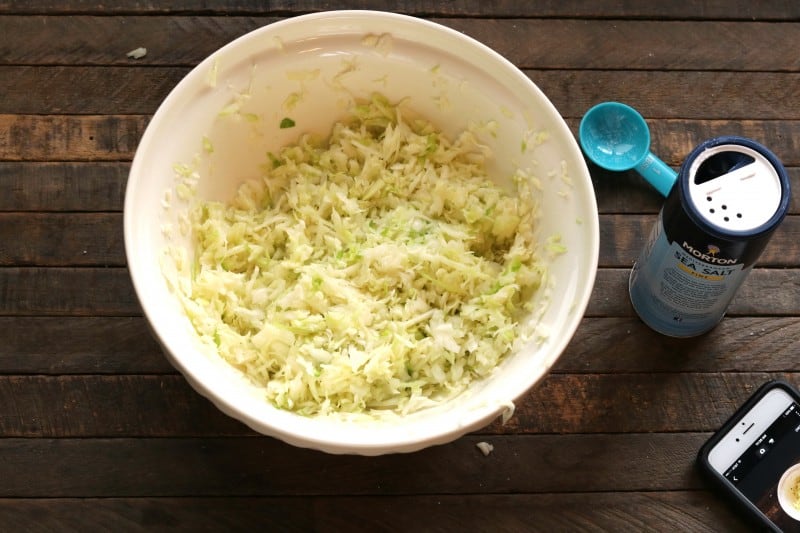
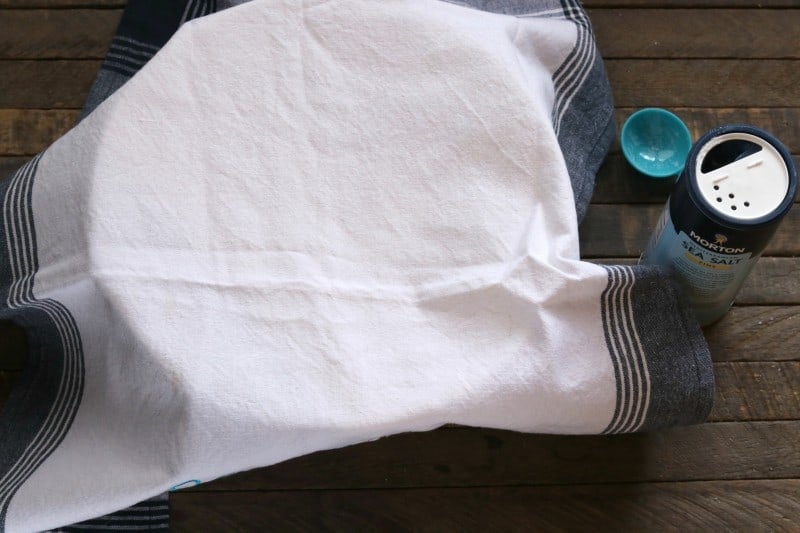
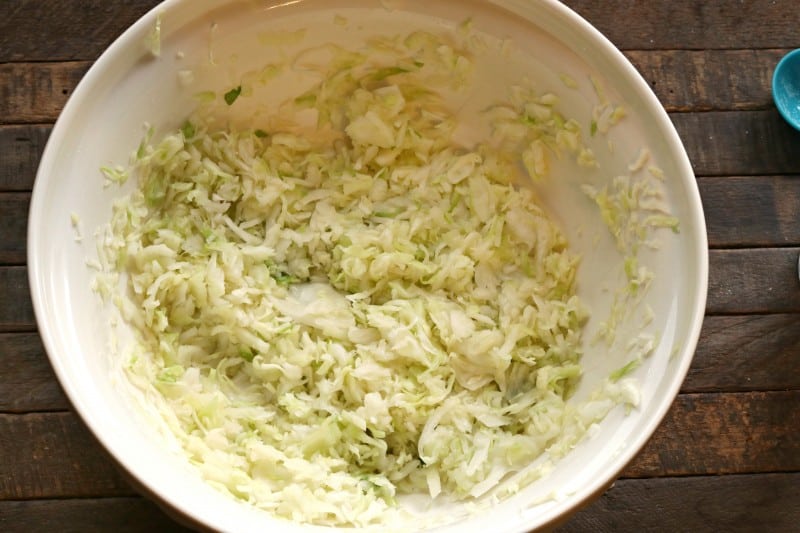


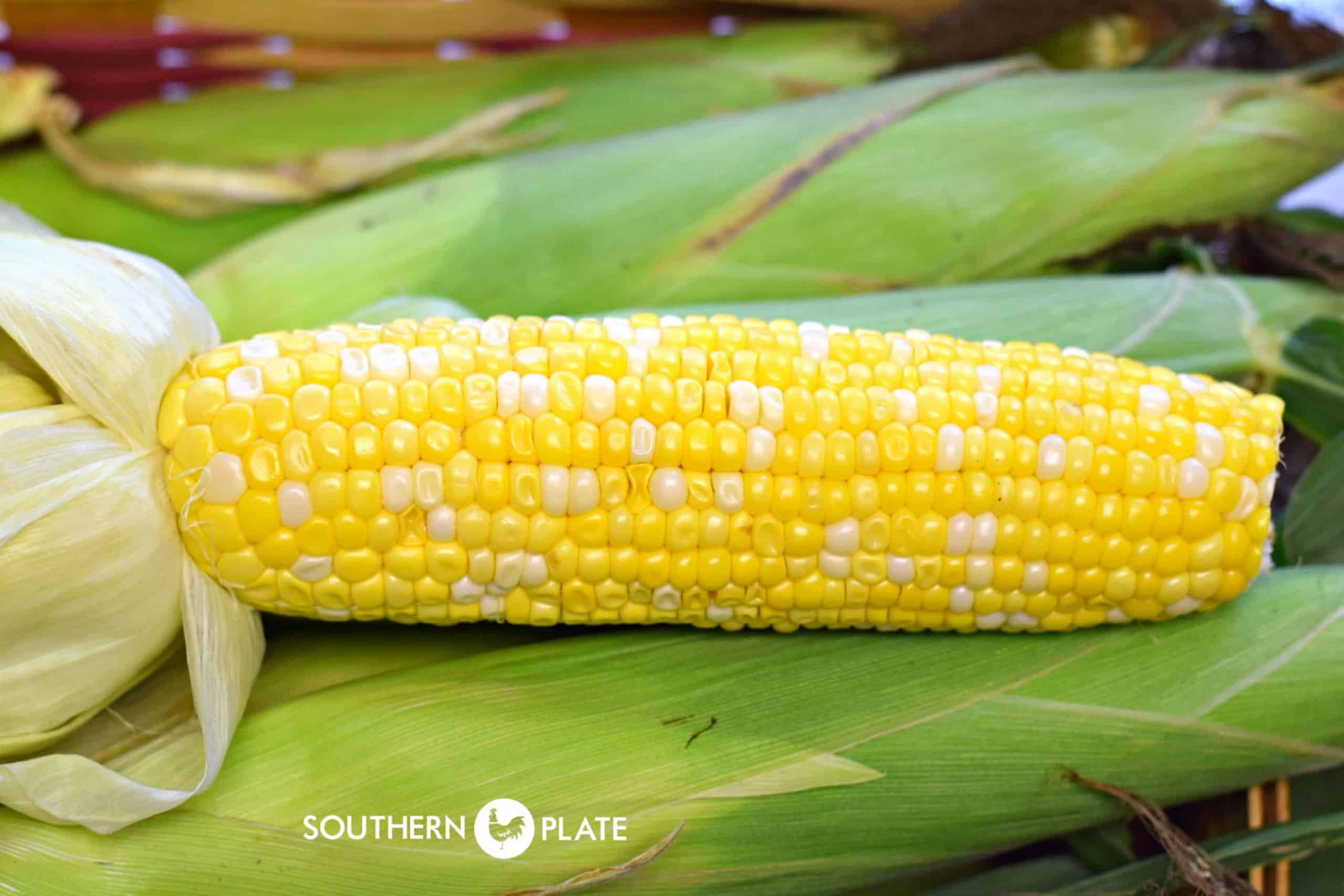

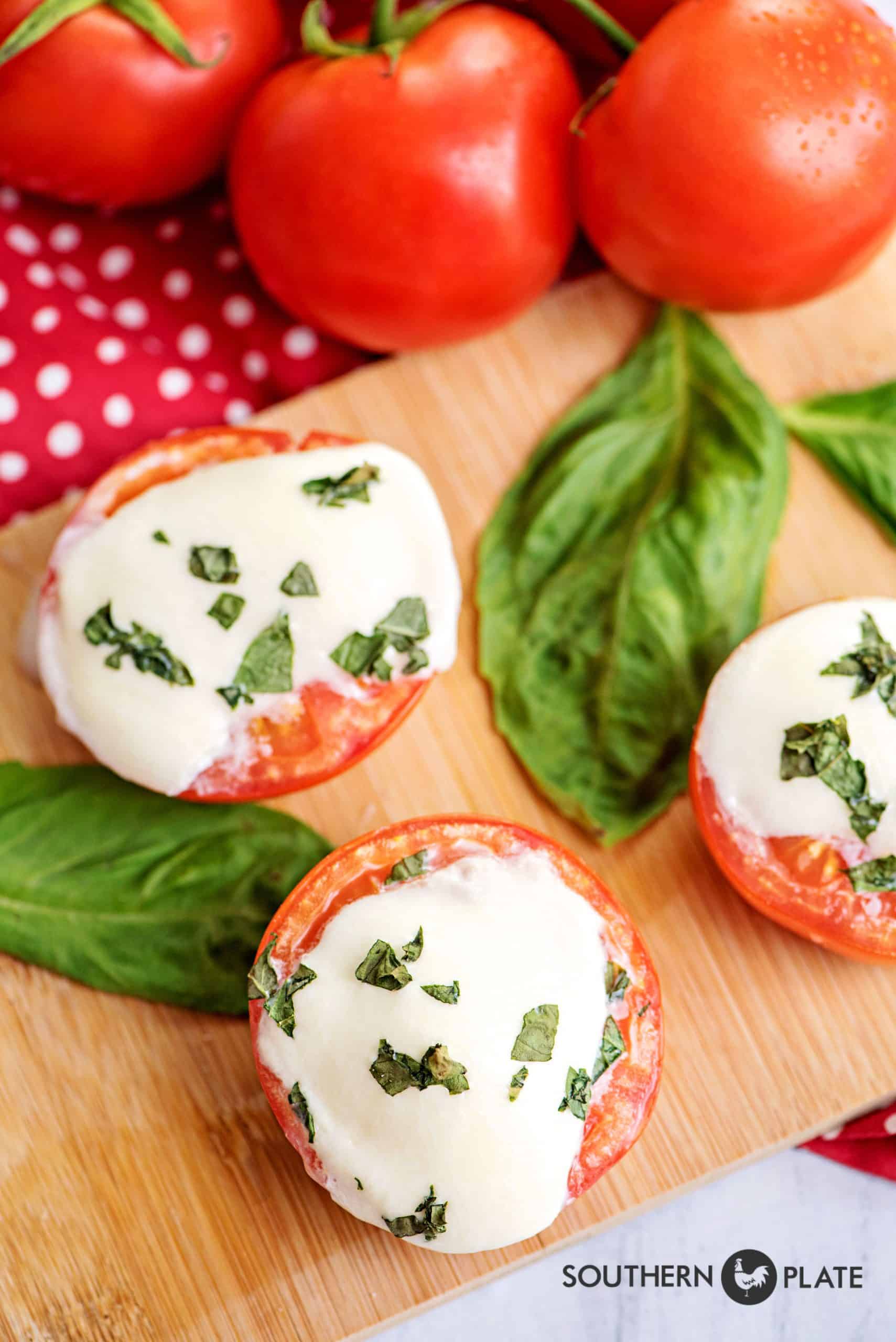

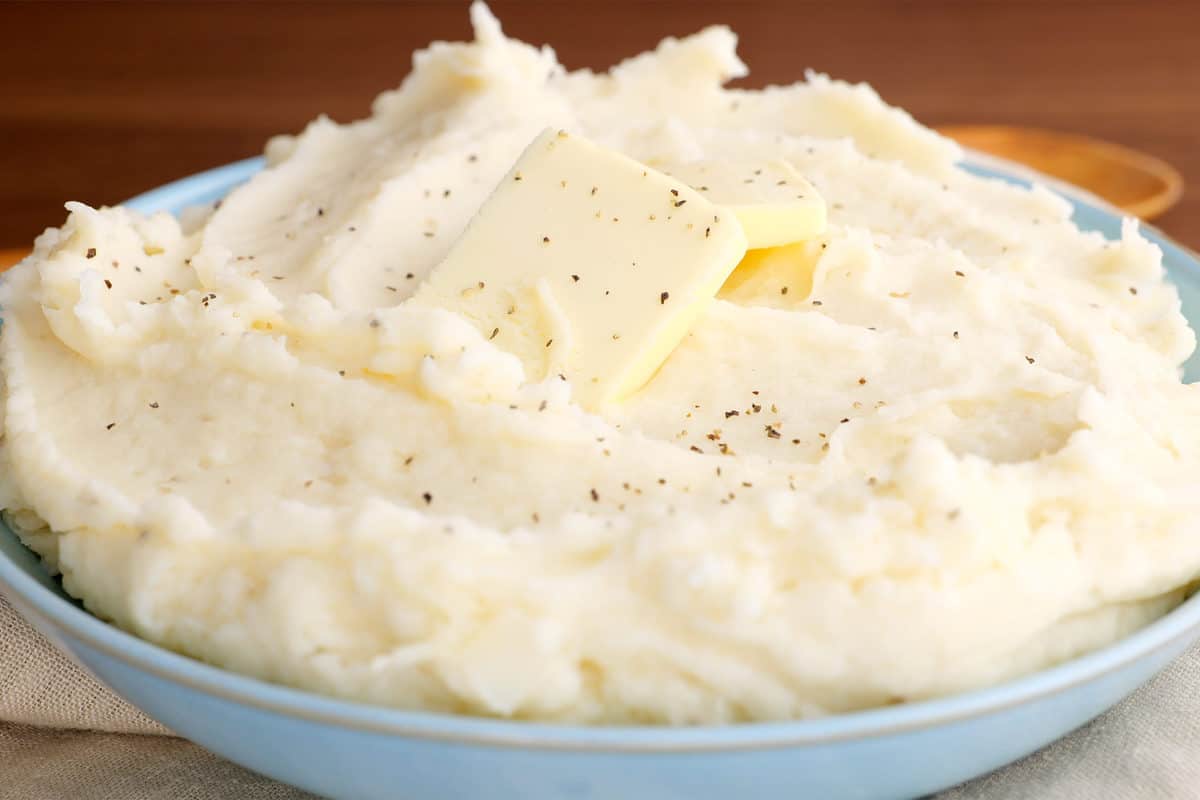
Christy….I just love you. With your pictures and comments, it makes understanding the recipe SO MUCH better. I am going to try this recipe tomorrow. I sell produce, etc. at our local farmers market here in Dalton Georgia in the summer and have had so many requests in the past for kraut. I was convinced that I did not know how or where to start…you make it sound so very simple. With our 1st market starting in May, I have plenty of time to get this recipe “down pat”. Thanks again…
Oh my goodness, I’m gonna have to stop by that Farmer’s Market one of these days and I look forward to your delicious sauerkraut! Thank you so much for the encouragement and for taking time to leave a comment, you have no idea how much I appreciate both!
I have stomach issues and have been told to eat fermented foods, which is incredibly hard to find any to buy. Yogurt has way too many carbs so I started making kefir. It is so much easier and less time consuming to make than yogurt was, plus it’s has way less carbs than yogurt. Is it ok to use the cole slaw mix? That’s the only shredded cabbage available here. I think I will try this and use my beanpot.
Cole slaw mix proabably has carrots. If carrots can ferment, you’re probably OK. But its very, very easy to use a knife and cut up a head of cabbage. Or buy yourself a box shredder. Cabbage is REALLY cheap!
I use carrots in my ferments a lot, they are great! You can also just buy a head of cabbage. That’s what I normally do because I usually make large quantities, but in this post I wanted to make the process as simple as possible for everyone with each step I could.
Christy, you are my hero!! I have been wanting to make homemade sauerkraut for years! I have had one of the fermenting pots on my wish list on amazon for so long, that it is no longer available. I want to make it your way first and see if I want to invest in the larger crock . Do you make it the same way in the crock? Some things I’ve read call for layering the salt and cabbage. The crock I liked was 4 gallons. I thought if I was going to make it, I wanted to make it worth my while. Also I want to know, when you make it in large batches , do you can it? Or just use is straight from the crock? I would love to see you make it in the crock sometime. Thanks so much for this post. Can’t wait to try it!
Hey Jayson! Yes, I make it the same way in a crock but I buy heads of cabbage and just slice it myself, then add about a heaping tablespoon of salt for every two pounds, bruise it up as best I can with my hands, and then place it in the crock and put weights on top.
I don’t can it in terms of using a water bath and such because I want it to stay all lively :). Once it is done, I put it in jars and just put those in my fridge. It is good for a very long time in the fridge and only gets better with time so I’m able to eat it all. 🙂 However, you can certainly can it in a water bath canner.
HI Christy, thanks for the info. I finally was able to make your sauerkraut this past Sunday. I got sick with the flu a few weeks ago and it wrestled me to the ground and stomped the stuffing out of me. I was afraid to make any when I was sick for fear I would ferment something else! So I got it started in my jar. I used the same amount you recommended. On Wednesday it already started smelling like sauerkraut! I was so excited! And there is nothing else growing in there that shouldn’t be! I can’t wait to try it. I’ve already saved your kimchi recipe to make after this. I definitely think I will look into the crocks you recommended. Thanks again!
I am so glad to hear you are feeling better Jayson!!! Enjoy the Sauerkraut!!
I like kraut but I Love kimchi! Sooo excited for a tutorial on that. Thank you.
I have your 3 cookbooks and have such fun perusing your site when I get a chance.
Love your positive attitude:)
Thank you so much Crystal! I am WAAAAY TOO EXCITED About showing y’all how to make kimchi! I’ll try to get it up in the next week or two but it is so simple, as simple as this! And so good 🙂
Thank you for being here and for being such an encouragement to me!
Looking forward to see how you make kimchi. Can’t wait to try this kraut!!
Oooh, looks great! You’ve totally de-mystified the process! Thanks, Christy! I’m totally going to try this now. 🙂
Thank you so much, Margaret! Let me know how you like it!
Hi Christy,
You mentioned several times that you would show your Fermenting Pot, I am thinking you use it for Kimchi? Never had that before. I have been looking for fermented foods to up my good gut bacteria.
I went over to the favorite gift tools, but didn’t see the pot there either.
Ellen, if you click on Christy’s post for Sauer Kraut for her recipe, she says to click on to see her fermenting pot. It will show you 3-4 pots including hers.
Thank you, Linda! I was going to say the same thing 🙂 Ellen, is the box of four fermenting crocks not showing up for you at the end of the post? Mine is the one on the far right.
I remember my mom made kraut in a five gallon stone jar and she would set a big plate directly on thecabbage and set it in the back porch to ferment.
I remember my grandmother doing the same. Precious days!